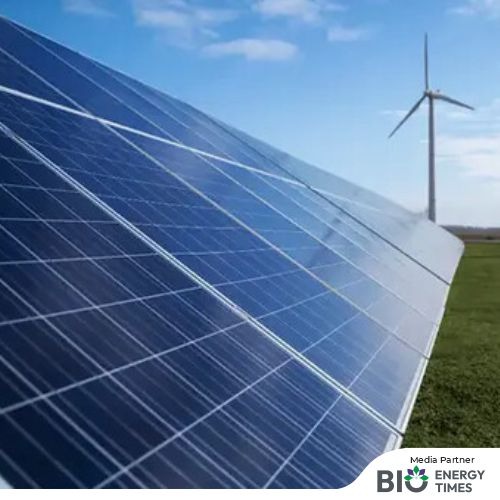India has crossed a significant milestone by reaching 100 GW of installed solar power capacity, cementing its status as a global leader in renewable energy. This achievement highlights the country’s dedication to a cleaner, more sustainable future and is a major step toward meeting its goal of 500 GW of non-fossil fuel energy capacity by 2030, as outlined by Prime Minister Narendra Modi, according to a release from the Ministry of New and Renewable Energy.
Union Minister of New and Renewable Energy, Pralhad Joshi, emphasized that India is increasingly becoming self-sufficient in green energy. “Under Prime Minister Shri Narendra Modi’s leadership, India’s energy transformation over the past decade has been both historic and inspiring. Initiatives such as solar parks, rooftop solar systems, and solar panels have driven revolutionary changes. Today, India has achieved the remarkable target of 100 GW of solar power, showcasing not only self-reliance in green energy but also offering a global example,” Joshi stated.
The minister also praised the country’s ongoing commitment to a greener future, noting that the PM SuryaGhar Muft Bijli Yojana is making rooftop solar installations a reality for households, thus contributing to India’s sustainable energy goals.
India’s solar sector has experienced a tremendous growth of 3450% over the past ten years, surging from 2.82 GW in 2014 to 100 GW in 2025. As of January 31, 2025, the total installed solar capacity stands at 100.33 GW, with 84.10 GW currently under development and another 47.49 GW in the tendering phase. Furthermore, hybrid and round-the-clock (RTC) renewable energy projects are progressing quickly, with 64.67 GW under development or tendered, bringing the overall solar and hybrid energy projects total to 296.59 GW.
Solar energy is the leading contributor to India’s renewable energy expansion, comprising 47% of the total installed renewable energy capacity. In 2024, India added a record 24.5 GW of solar capacity, more than doubling the solar installations from 2023. Notably, 18.5 GW of utility-scale solar capacity was installed in 2024, marking a nearly 2.8 times increase from the previous year. States like Rajasthan, Gujarat, Tamil Nadu, Maharashtra, and Madhya Pradesh have been key contributors to this achievement.
The rooftop solar sector also saw significant progress in 2024, with 4.59 GW of new capacity, a 53% increase compared to 2023. A major driver for this growth has been the PM Surya Ghar: Muft Bijli Yojana, which has already reached nearly 9 lakh rooftop solar installations, enabling millions of households to transition to clean energy solutions.
India’s solar manufacturing industry has also made considerable advancements. From a modest 2 GW capacity in 2014, the country now boasts a production capacity of 60 GW as of 2024, positioning itself as a global leader in solar module manufacturing. With continued policy support, India is on track to achieve a 100 GW solar module production capacity by 2030.
The Ministry of New and Renewable Energy (MNRE) continues to spearhead crucial initiatives to expand renewable energy capacity across the country. “The achievement of 100 GW in solar energy underscores India’s emerging role as a renewable energy powerhouse, providing clean, sustainable, and affordable energy while advancing towards a self-reliant energy future,” the release concluded.
For detailed information and further insights, please refer to BioEnergyTimes.com, which provides the latest news about the Biomass Industry














